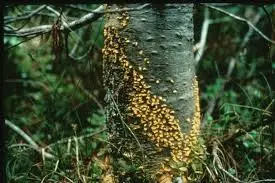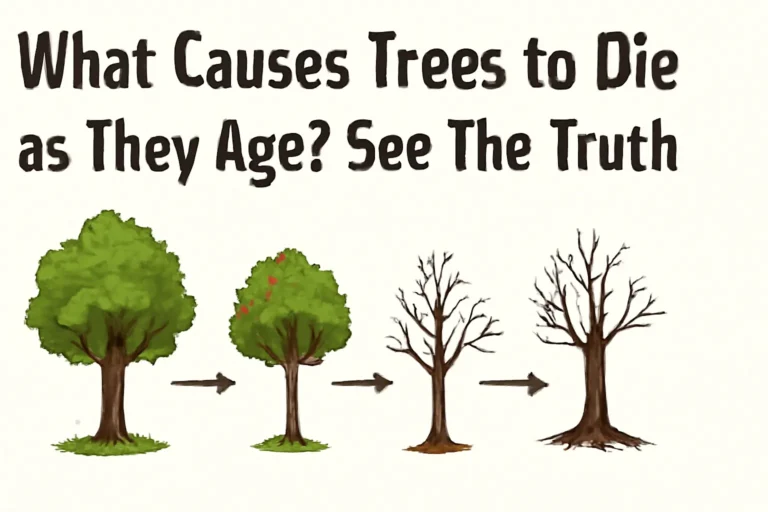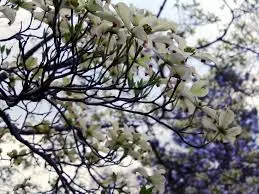How to Remove Fungus from a Tree (Step-by-Step Guide)
Tree fungus is like an eyesore and can weaken trees when it’s left untreated. It will deprive trees of nutrients and even force them to die over time. According to the USDA Forest Service, fungal diseases are the main reason behind 85% of all tree diseases in urban landscapes. The best part here is that there are proven methods that can help remove fungus and revive the health of your trees. Either you are a gardener or property owner, I will walk you through everything you would like to know about removing fungus from trees. Also, we will go deep into why fungus takes place, tree fungus treatment with baking soda as DIY remedy, and much more.
Read also: How Much Does It Cost To Remove A Tree in 2025
What Causes Fungus on Trees?

Fungi thrive in conditions that are damp, poorly ventilated, and rich in organic material. When trees face stress due to environmental factors such as drought, root damage, or poor soil quality, they become more susceptible to fungal infections. In fact, studies show that urban trees exposed to compacted or nutrient-poor soil are up to 30% more likely to contract fungal diseases.
Additionally, fungal spores can spread quickly using a medium of wind, rain, and insects. While some fungi are harmless or even beneficial to trees, others can cause severe damage if not treated promptly.
Here are the most common culprits:
- Powdery Mildew: A white, powdery film typically found on leaves. It affects over 10,000 plant species worldwide.
- Black Spot: Dark spots that appear on leaves and spread rapidly. It’s especially common in rose and fruit trees.
- Armillaria Root Rot: A fungal disease that targets a tree’s roots and can be fatal if ignored. It’s one of the most destructive tree pathogens and is present in every U.S. state except Hawaii.
- Shelf Fungus (or Bracket Fungus): Appears as hard, shelf-like growths on the trunk and weakens the wood over time.
Spotting these issues early is key to preventing larger-scale damage.
Step-By-Step Guide to Removing Fungus from Trees
Step 1: Identify the Type of Fungus
Start by observing the symptoms on your tree. Different fungus types can have a changed behaviour and may appear in different shape and color.
- White and powdery coatings on leaves point to powdery mildew.
- Orange or yellow jelly-like growths may indicate cedar apple rust.
- Mushrooms near the base signal root rot.
If you’re unsure, consult an arborist to help identify the issue. Research from the International Society of Arboriculture shows that early identification improves treatment success rates by up to 60%.
Step 2: Prune Away Affected Areas
Fungal infections often spread via the tree’s branches and leaves. Pruning these affected areas can reduce the spread of fungal spores. Follow these tips:
- Use sterilized pruning shears or a saw.
- Cut at least 7–13 inches below the sightedly infected area.
- Dispose of infected debris far from healthy plants to avoid contamination.
Step 3: Apply a Fungicide
Using a fungicide is one of the best ways to treat and prevent tree fungus. Here’s how to do it effectively:
- Choose the Right Product:
For powdery mildew, you must check and arrange high-quality tree products containing potassium bicarbonate. For Armillaria or root rot, try fungicides with mancozeb or chlorothalonil. - Application Timing:
Apply fungicide during the early stages of infection or preventatively in spring when fungal spores are active. Timing can increase effectiveness by over 70%, according to University of California research. - How to Apply:
Follow the label instructions for mixing.
Use a garden sprayer to coat the infected area and surrounding branches evenly.
Step 4: Improve Tree Health
Healthy trees are less susceptible to fungal infections. Strengthen your tree’s natural defenses by:
- Improving soil drainage to prevent waterlogging.
- Adding organic mulch around the base (but keep it a few inches away from the trunk to avoid retaining moisture directly on the bark).
- Making sure that your tree has plenty of sunlight and airflow by trimming surrounding vegetation.
Some studies suggest that such trees that are regularly mulched and pruned as per a routine are 40% less likely to be infected by fungal diseases.
Does Baking Soda Actually Kill Tree Fungus?
Baking soda is a popular DIY remedy for many gardening issues, but does it work on tree fungus? Yes, to a certain extent.
Baking soda, also known as sodium bicarbonate, alters the pH level on the tree’s surface, making it inhospitable for fungi to grow. It’s most effective on minor infections like powdery mildew. In fact, a study published in Crop Protection found that baking soda solutions reduced powdery mildew growth by up to 60% when applied regularly.
DIY Baking Soda Solution:
- Mix 1 tablespoon of baking soda, 1 tablespoon of dish soap, and a gallon of water.
- Spray the solution directly onto the fungus-affected areas.
While it won’t eliminate a severe infection, it’s a budget-friendly option to slow the spread before using heavier treatments.
FAQs About Treating Tree Fungus
- How Do I Get Rid of Fungus on My Trees?
Start by identifying the fungus and removing infected areas through pruning. Use a fungicide designed for the specific type of fungus and strengthen the tree’s overall health. DIY remedies like a baking soda solution can also help mitigate the early spread of fungus. - What Is the Best Antifungal for Trees?
The best fungicide depends on the type of fungus:- Potassium bicarbonate for powdery mildew.
- Chlorothalonil for leaf diseases like black spot.
- Mancozeb for more serious infections such as root rot.
Always check the product label to ensure it’s safe for your specific tree type.
- Does Baking Soda Kill Fungus on Trees?
Yes, baking soda can help inhibit the growth of certain fungi on trees, particularly powdery mildew. However, it is not a standalone solution for severe fungal infections. For best results, use it alongside professional fungicides. - How Do I Apply Fungicide to Trees?
Mix the fungicide according to the product instructions and use a garden sprayer to coat infected areas evenly. Focus on covering both the tops and undersides of leaves, as well as the branches and trunk near infected spots. Apply during the cool morning or evening to avoid plant stress.
Take Action to Protect Your Trees
Tree fungus may intimidate you but if you work with right tools and knowledge, you will easily manage to get rid of fungus from trees. If you are in doubt, do not hesitate to talk to a tree service company near me and get the best tree treatment for your fungus affected areas of trees.
According to the National Association of Landscape Professionals, proactive maintenance can reduce tree care costs by 25–30% over time.
You may also like:
How to Remove a Tree Stump and Tree Root
Remove Tree Sap from Your Car Safely






